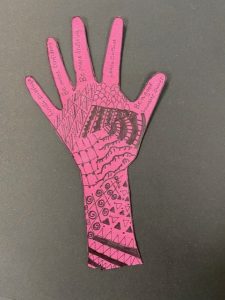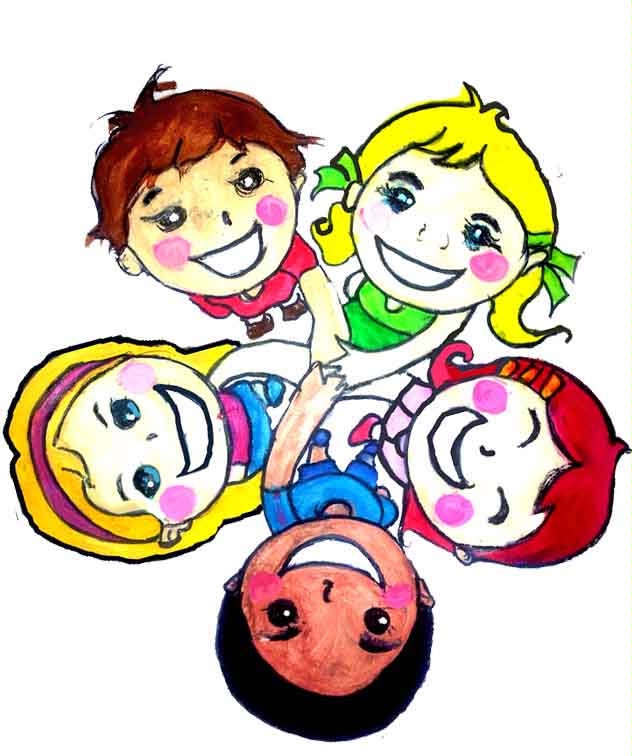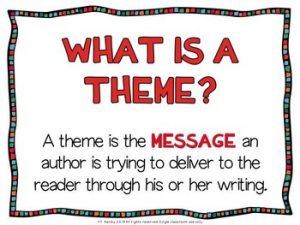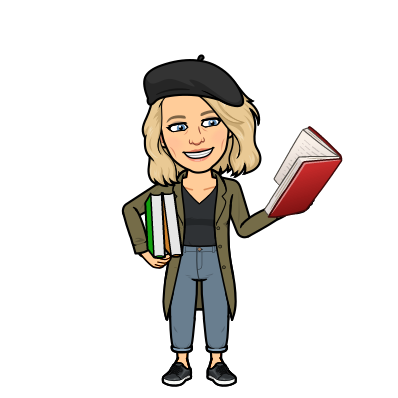T2 – 2022
POETRY UNIT
- Haiku (2 by April 29)
- Quatrain and Cinquain (2 due by May 6)
- I Am From (due May 13)
- Acrostic (due by May 13)
- Diamante
- Limerick
- Concrete
- Free verse. —> 4 due by May 27
Please have a total of ten poems in your Poetry folder by May 27th .
For an example of the Limericks we read today, please visit this link.
Blog #14 – Powerful Goals (SMART) – due next Wed. Apr.6
- Turn the last page of your yellow package into a blog
- Expand your writing if you can
- Writing goals:
- I can write in multi-paragraph form.
- I can write with detail to explain my thinking, making inferences with evidence from the book.
- I can provide a catchy, interesting introduction and close with an insightful conclusion.
To help improve your writing try these two strategies:
- Don’t forget, every time you make a point, you have to PEE!
- 3, 2, 1 Check It
- 3 spelling/punctuation corrections
- 2 word changes/ word choice
- 1 sentence “shake up”. (Find a sentence that could be re-written to be more clear, effective or powerful).
Blog #13 – Discussing Theme (Pax)
- Choose one or two themes to discuss from the book, Pax.
- Consider the following possible themes (or come up with your own
- Love/Bonds between humans and animals; humans to each other
- Identity (Peter, Pax, Vola); “finding yourself”
- Facing adversity, the journey
- War (“War! War! What is it good for? Absolutely nothing, say it again” — it’s a song. Look it up)
- Consider how characters can change (dynamic vs. static)
- Writing goals:
- I can write in multi-paragraph form.
- I can write with detail to explain my thinking, making inferences with evidence from the book.
- I can provide a catchy, interesting introduction and close with an insightful conclusion.
T1 – 2021
Blogging!
Blog #12 – TERM 1 REFLECTION
- Write about 1-2 things you are proud of accomplishing this term.
- Write about a time you persevered through a challenge. What did you do to overcome that barrier? (you can borrow from Blog 11)
- Write about one thing you are looking forward to next term and what you will do to be successful in that.
Blog #11 – Eugenia Duodo’s Pro-Tips for the Unlikely Scientist!
Was there anything you wanted to do but felt you didn’t fit the picture of someone who could be successful in that?
- Use the above question to begin your introduction to Blog 11.
- Then chose one of Eugenia’s PRO-TIPS from the doc shared with you in class (and can be found in TEAMs homework channel) to form the body of your blog writing. Use the questions and quotes to help guide your thinking and writing.
- Conclude your blog using a summary of your ideas/feeling, finishing on an inspirational note!
- Writing goals:
- I can write in multi-paragraph form.
- I can write with detail to explain my thinking, using examples from the TED talk (The Unlikely Scientist).
- I can write an interesting introduction and close with something inspirational.
Blog #10 – Character Sketch Pt.2
- Choose ANOTHER character (different from Blog#9) and describe THREE characteristics (traits) of that person (or fox). Each trait must be fully backed up with evidence from the book and well written explanations. Use examples and evidence from the book, Pax.
- Writing goals:
- I can write in multi-paragraph form.
- I can write with detail to explain my thinking, making inferences with evidence from the book.
- Choose one for yourself.
Blog #9 – Character Sketch
- Choose one character (Peter, Pax or Vola) and describe THREE characteristics (traits) of that person (or fox). Each trait must be fully backed up with evidence from the book and well written explanations. Use examples and evidence from the book, Pax.
- Writing goals:
- I can write in multi-paragraph form.
- I can write with detail to explain my thinking, making inferences with evidence from the book.
- Choose one for yourself.
Blog #8 – Vola’s Cabin
- Draw a picture of Vola’s cabin using descriptions from the book. Do not miss a detail, but feel free to embellish (add to) your drawing!
Blog #7 – The Gulf Stream Will Flow
- “The Gulf Stream will flow through a straw, provided the straw is aligned to the Gulf Stream and not at crosscurrents”. Explain what this means using evidence from the text and examples (connect to self/world).
- Writing goals:
- I can write in multi-paragraph form.
- I can write with detail to explain my thinking, making inferences with evidence from the book.
- Add goals suggested by your teacher in feedback from previous blog writing.
Blog #6 – How are Humans Careless? How does this contribute to one of the possible THEMES of the book?
- In Chapter 7 of “Pax”, Grey is curious about Pax’s humans – if they are “false acting” and “careless” like other humans.
- How does Pax respond to this question (about his humans – Peter and his father)?
- Discuss the ways in which humans can be seen as “careless” from the perspective of other animals.
- Extension: Discuss how this conversation between Grey and Pax contributes understanding or insight into one of the emerging themes of the story.
A theme is the life lesson, meaning, MORAL, or message about life or human nature that is communicated by a literary work (ie. the author). In other words, theme is what the story teaches readers.
new Blog #1 – My Goals for the Year – Hand Art
- Using the five goals you included in your zentangle hand art, share your five goals for the year. Expand and make them interesting to read so that you can share with your parents your “hopes and dreams” for the year!
- Please include a REFLECTION of what you liked best about your artwork. What are you most proud of? What did you think of this art activity? What could you have improved on? How could this activity be made even better?
- Include a picture of your hand art. It can be found in the folder I shared with you, called: Div 3. Art 2021. Find your picture and save it to your OneDrive. Put it in your Term 1 folder. “Add Media” to insert picture into your blog post.

Blog #5 – Your Choice Blog
- From the Blogging page, choose one of ten genres of blogging. For example, if you choose to do a “review” blog, you may want to choose to review a book, movie, or newly released album. Read all about your genre of blogging and be sure to follow it’s criteria.
- Be sure to let me know what kind of blog you are writing. Ex. This is a review blog
- Don’t forget to include a title, introduction, and multiple paragraphs.
Blog #4 – Prediction (from text)
- For this blog you will write a new prediction using information to inference and predict what you think will happen next. You will make a prediction and then BACK IT UP with evidence from the book. Explain your thinking and use detail.
- Writing goals:
- I can make full sentences that start with a capital and end with a period.
- I can write in paragraph form; I can make multiple paragraphs.
- I can write with detail to explain my thinking, making inferences with evidence from the book.
- Ex. “I think _____ will happen because _____.” or “I predict ____. I think that because_____.”
Blog #3 – Compare and Contrast (Pax and Peter)
- Using the list you made in class about what you think is similar about Pax and Peter, write a blog (3 paragraphs minimum) comparing Pax and Peter. How are they similar? Write with detail. How are they different?
- Writing goals:
- I can write with detail to show how Pax and Peter are similar/different.
- I can make full sentences that start with a capital and end with a period.
- I can write in paragraph form, making at least 3 paragraphs.
Blog #2 – Cover Prediction
- Using the language prompts given (see bookmark or “blues clues” handout), make a prediction about what you think the book, Pax, will be about.
- Ex. “I think _____ will happen because _____.”
- “I see ______ on the cover. I think ______ will happen because____.”
- “I predict ____. I think that because_____.”
Blog #1 – Anything Goes! (optional)
- Post your first blog about anything you want to tell me. Short but sweet!
What in the World – Facebook Faces the Music
Online Questions (pg.28):
#1 . Learn from social media and medical experts how Instagram is harmful to kids:
https://www.cbc.ca/player/play/1953746499861
https://www.ctvnews.ca/health/frequent-social-media-use-bad-for-teen-girls-mental-health-study1.4548437?cid=ps%3A920
Are you an Instagram user? Do you feel that the concerns of medical experts are justified? Explain.
#2 Recently, China has imposed limits on the amount of time children can spend playing online games
and on their use of Douyin, China’s version of TikTok:
https://www.yout-ube.com/watch?v=osntafpMScQ
https://www.bbc.com/news/technology-58384457
https://www.bbc.com/news/technology-58625934
What did you learn about China’s reasons for establishing these limits? Do you agree or disagree with
the government’s concerns, and how it is choosing to address them? Explain.
#4 Watch how a teen tried a Disconnection Challenge for her mental health:
https://www.yout-ube.com/watch?v=mBSLe8Tz2wQ
Would you consider trying this challenge? Explain.
Learning Outcomes for Term 1:
We’ve started the term with some reading comprehension to help get the students warmed up and ready for an exciting year of reading, writing and oral language! Terry Fox and What in the World have provided students with non-fiction reading/ comprehension and simple sentence writing.
We’ve also begun a class read-aloud, Pax, by Sara Pennypacker. This is a great little read about a boy and his fox. I’m excited to share this story and its surprising outcome with Division 3! In Term 1, we will be discussing the book and sharing ideas in A/B partners, small groups and larger class discussions, which will make up the basis of their oral language learning for Term 1.
Students will be learning reading strategies, such as inferencing, connecting, and making predictions. In writing, students will share their perspectives through blog-writing and will demonstrate their ability to write with detail, examples and explanations to develop analysis or argument. They will be building vocabulary through weekly Word Wall work. I will post recent Word Walls, including when quizzes are, on the novel page for Pax.
Be sure to ask your child what is happening in the book! Ask for their opinions; ask: Why do you think that? Probe for what they think will happen next. This is a great way to support and engage in your child’s learning! Students are welcome to search for on-line versions of the book, but must not skip ahead in the story, otherwise their prediction writing will be hindered.
Happy Reading!
T1 – 2020
Blog #8 – The Importance of Setting
- How is the setting of One Crazy Summer important or play a role in the story?
- Why is it important to take note of setting in a story? How does it contribute to the understanding of the story?
Writing Goal: Pick a writing goal for yourself. Think about something you would like to improve on and write this goal at the top of your blog.
Blog #7 – Choose a quote to write about. What does Cecile mean by this? What does this tell us about Cecile? Delphine? Their relationship?
- “We’re trying to break yokes. You’re trying to make one for yourself. If you knew what I know, seen what I’ve seen, you wouldn’t be so quick to pull the plough”.
- “It wouldn’t kill you to be selfish, Delphine”.
Writing goal:
- Show greater insight into the character’s feelings, motivations, and point of view;
- provide ample support from the text.
- I can support my ideas with details and explain my thinking.
Blog #6 – Tell me how your winter break will be different this year. What traditions do you have? What do you usually celebrate? What won’t you be able to do this year because of the pandemic?
Writing goal: I can introduce my writing with a topic sentence and introduction paragraph.
Blog # 5 – Make a blog post about your goals for the year that you made with your mandala art.
Writing goal: I can introduce my writing with a topic sentence and introduction paragraph.
Blog #4 – Racism. Write about a moment of racism you have experienced or witnessed. If you haven’t, write a reflection on racism.
Writing goal: I can introduce my writing with a topic sentence and introduction paragraph.
Blog #3 – Choose one of the following quotes/ideas to write about.
- “I’m Black and Proud”
- “Beating eggs never makes the evening news”.
- Black vs. Colored. In the book, the three girls correct Kelvin, stating they are “colored”, not “black”. Please explain why you think this is? What is the difference? When would either of these terms be used? Why did Kelvin insist they were Black?
Writing goal: I can introduce my writing with a topic sentence and introduction paragraph.
Blog #2– Prediction. Write a prediction about what you think will happen next is the book, One Crazy Summer. Remember to use details from the text to support your ideas.
Writing goal:
- I can make predictions using clues from the text.
- I can support my ideas with details and explain my thinking using language like “I predict…. I think this because…”
Blog #1 – Cover Prediction
_________________________________________________________________
Blog #14: Tell How a Character Has Changed
- Write about a character from a novel you have completed in Lit Circles. Describe how the character has changed from the beginning of the book, to the end.
- Writing goals:
- I can introduce my topic in an introduction paragraph
- I can list the traits of a character in a novel I have read, show with evidence how they have changed.
- I can create some kind of ending (summary or concluding statement/paragraph)
Blog #13: S.M.A.R.T Goals 2020
- Post 1 or 2 of your SMART goals to your blog to share with your family for this upcoming Student Led conferences (Wednesday, Feb 5)
- Remember to be SPECIFIC; goals should also be MEASURABLE, ACHIEVABLE, RELEVANT and TIME-BOUND.
Blog #12: The Seven Sacred Teachings
- For each of the 7 sacred teachings (reading hand-out), give/write an example of what that characteristic would look like in real life.
- Tell me why it would be important for chosen leaders (consensus government) to demonstrate these qualities.
- Writing goals:
- I can provide an introduction; I can support my ideas with details and context to explain my thinking.
- I can create some kind of ending (summary or concluding statement/paragraph)
Blog #11: Character Report Card
- List the strengths and weaknesses of ONE character
- Give a report card grade on the proficiency scale and comment for each character trait you decide to talk about.
- Writing goals: I can provide an introduction; I can support my ideas with evidence from the text.
Div. 4 Language Arts 2019-2020
Core Competencies to consider for this term…
- Communication
- I ask and respond to simple, direct questions
- I am an active listener; I support and encourage the person speaking
- I recognize that there are different points of view and I can disagree respectfully
- I can summarize key ideas and identify the ways we agree
- I can recount simple experiences and activities and tell something I learned.
- Creativity
- I build on others’ ideas and add new ideas of my own, or combine other people’s ideas in new ways to create new things.
- I get new ideas that are new to my peers.
- Critical Thinking
- I can analyze evidence from different perspectives.
- I can analyze my own assumptions and beliefs and consider views that do not fit with them.
- I can ask open-ended questions and gather information.
- I can monitor my progress and adjust my actions to make sure I achieve what I want.
- I can reflect on and evaluate my thinking.
The Core Competencies I’ve Been Working on this Term.
Every term you will do a SELF-ASSESSMENT of your progress in the Core Competencies.
In this blog, you are going to consider some of the Core Competencies (listed above) that have to do with the work we’ve done in Language Arts this term. Think about the book we are reading together. You have been doing a lot of listening, but also thinking about the story, the characters, their motivations (why they do they things they do?), and their character traits (what kind of people are they?)
You’ve shared your opinions about the story and the characters, with partners and to the class (A/B partner sharing).
You’ve written predictions, made inferences, and developed your writing. (Blog writing).
In this blog, you’re going to choose a few of the competencies to write about and tell me what you’ve achieved or are working on, but don’t forget to include the evidence!What did you do that proves you were working on that competency?
Blog 2: Second Prediction
Writing goal:
- I can make a prediction using clues from the text.
- I can support my ideas with details and explain my thinking using language like “I predict…. I think this because…”
Blog 1: Cover Prediction
Writing goal:
- I can make a prediction using visual clues from the cover.
- I can support my ideas with details and explain my thinking using language like “I predict…. I think this because…”
________________________________
Term 3: Descriptive Language for Writing
Choose one of the following pictures to write about. This is a paragraph using descriptive language to describe an experience using all the senses! If this were a page out of a book, what would it say? This is the beginning of our story writing “writer’s workshop”.
______________________________________________________________
This term we’ll be jumping in NOVELS in a BIG way. Some of the more VORACIOUS readers will be reading as many as 10 or more novels in. We’ll be structuring our novel reading by participating in LITERATURE CIRCLES. I use a different kind of lit circle structure based on developing questions – simple, fact-based questions, and deeper thinking questions, I like to call “fat” questions. Students read through the book together and are responsible for having their section read and questions developed and ready for discussion EACH week. If ONE person is not ready, the whole group cannot meet and their progression through the book is slowed down. So students MUST keep up to date on their reading assignment for the week.
LIT CIRCLE TASKS:
- 2 Skinny questions (fact-based, can be found in the book)
- 2 Fat questions (opinion-based, prediction type questions, “why do you think…”, answer NOT in the book)
- 1 personal connection
- 3 definitions for words found in the book.
This term we will continue to look at ELEMENTS of a STORY (for details, scroll below).
Reading Comprehension – What in the World and extra non-fiction reading.
Daily Oral Language – practice in common grammar usage.
This term we’ve been learning to make predictions using evidence from the cover or text, and using that to support our our thinking. We are using sentences like: “I think that because, in the book…”
We’ve also revisited inferencing. This is to make an educated guess as what the deeper meaning might be, not from the literal words found in the text but what we can gather from information we may already have or information gathered from the book. It’s like reading between the lines!
In STICK-IT-TOGETHER, students have been responding to questions and writing a response that
- Starts with the question
- Uses supporting evidence from the text
- Shows their thinking
- Improves vocabulary
- Uses proper sentence structure.
________________________________________________________________________
Figurative Language Rap!
_______________________________________________________________________________________________
Static vs. Dynamic Characters
In your Battle of the Books – Reading Response assignment, notice that you’ve been asked to write about the characters of the book, if they have changed from about midway to the end of the book. Often characters go through some form of transformation, thus making them “dynamic” characters. Static characters do not change; they are often minor characters and do not have the time/space in the book to demonstrate change. While not all protagonists are considered dynamic, they most often are as it makes them more interesting and the story more complex. For more on this, please check out the following link. See how Tony Stark from The Avengers demonstrates transformation, while Captain America (aka Steve Rogers) remains a static character.

____________________________________________________________________
Hey y’all!
Some of you have been writing fantastic narratives for your Free Writes. Writing stories is a special genre of writing, and I’m so glad that you are loving it! But you should know some of the rules around including dialogue in your stories. Please read the following article. This will help you improve your writing for sure!
Here is a word doc for you How to Write Dialogue for Narratives
Or, if you prefer, here’s the direct link: https://www.thoughtco.com/writing-story-dialogue-1857652
___________________________________________________________________
LIT CIRCLE TASKS:
- 2 Skinny questions (fact-based, can be
 found in the book)
found in the book) - 2 Fat questions (opinion-based, prediction type questions, “why do you think…”, answer NOT in the book)
- 1 personal connection
- 3 definitions for words found in the book.
Word Wall – learning vocabulary from class novel and using these words correctly in a sentence. Click here to see the Word Wall words.
Reading Comprehension – What in the World and extra non-fiction reading.
Daily Oral Language – practice in common grammar usage.
_____________________________________________________
Telegami saving instructions:
- Before you even open Telegami, be sure to change settings to allow Telegami access to photos, camera, and voice. That means the three tabs are switched to show green
- Create your Telegami.
- To save, first go to SHARE –> then hit the SAVE button (on a folder icon). You can now find your project in the PHOTOS.
Elements of a Story
Our final Language Arts Lit Circle project is a pie wheel of the Elements of a Story. We are writing 6 paragraphs and will be fitting each story element in this piece of “pie”. The six paragraph topics are:
- Narrative and Point of View
- Setting
- Main characters
- Character conflict
- Plot
- Theme
ONE PAGER
Remember it must be on blank paper, fill the whole page and include:
- two passages you think are critical to the story (covers a ‘big idea’)
- graphical representation of the passage(s) — can be drawn, printed from computer, or cut out of a magazine. Colour is used.
- personal response that explains why you chose the passages and why you think they important to the story, what do they mean (what does the author seem to be telling us?), and any other insight or connection you want to share.




Leave a Reply